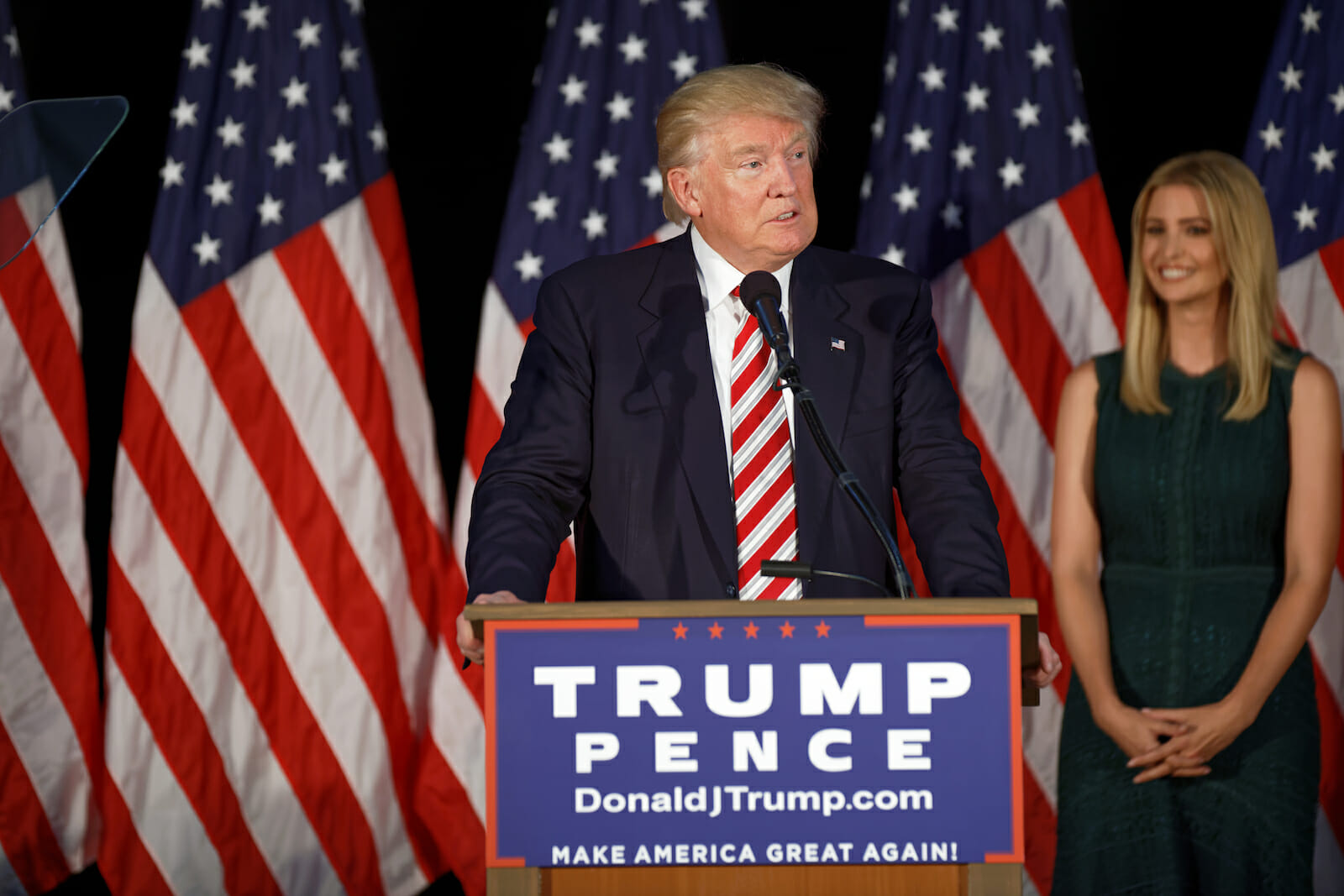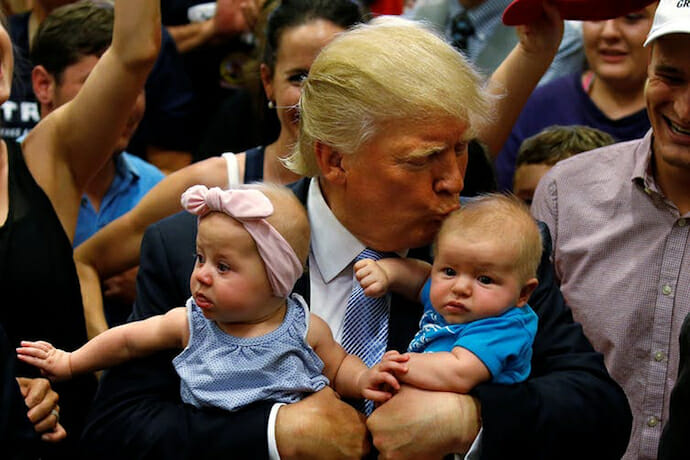
Politics
Trump’s Economics Speech: Seeking Conservative Cred and Kissing Babies
Editor’s note: Republican presidential nominee Donald Trump delivered an economic policy speech on August 8 in Detroit that called for aggressive sanctions against U.S. trading partners, a rollback of environmental regulations and large tax cuts. He offered a few new policy proposals but primarily sought to contrast himself with rival Hillary Clinton, who he said wanted to redistribute wealth and add new layers of regulation. We asked two of our economic experts to watch the speech and offer a few takeaways.
Trump trumpets some conservative principles
Christos Makridis, Stanford University
A fundamental difference between conservatives and liberals is how effectively they believe government manages resources. Conservatives tend to think the government is a poor steward; liberals take the opposite position.
These are oversimplifications, but they matter when it comes to analyzing Trump’s recent economic speech and help illustrate why conservatives like me who didn’t support him in the primaries are increasingly gravitating toward his campaign. In particular, Trump made several points that are worth highlighting.
The first was his review of the economic facts underscoring the election year: Inequality is high, policy uncertainty is high, labor force participation is low and economic growth is low.
None of this is to say that the U.S. is doing poorly relative to other countries, but we are doing poorly relative to our potential.
In fact, we’ve seen the weakest “recession recovery” in recent history. Research by economists Lee Ohanian and Harold Cole showed how government policy (in particular price controls) prolonged the Great Depression. Could current government policy be similarly holding back a genuine recovery?
The second was his tax proposal, which would include a major simplification and reduction of marginal rates (from seven to four).
High corporate tax rates can deter existing companies from making profitable investments. The costs of these taxes are clear: They reduce firms’ physical and human capital investments – the latter of which is desperately needed at a time when there is potentially a “skills gap.”
Lowering tax rates provides individuals with more money to use as they see fit, rather than entrusting it to the government. In a similar vein were his proposals to decentralize education and make child care more affordable. Improving access to child care and parents’ ability to provide for their children is integral to a child’s development in the early years.
The third was his emphasis on doing more at home, in the U.S., which means producing more of our own energy and manufacturing things that we don’t need to trade for. The theory of comparative advantage, in which each country will tend to produce more of the goods and services in which it has the upper hand, is mainstream in economics. But it doesn’t always hold up when there are large distortions, as there arguably are today. The shale boom provides a glimpse of economic benefits when we can produce more stuff – energy or goods – domestically.

How to kiss babies, Trump-style
Jay Zagorsky, The Ohio State University
Politicians have a long history of trying to be elected by kissing babies. However, with about four million babies being born in the U.S. each year, there isn’t enough time in the current presidential race to kiss enough newborns to make any real difference. So Trump is trying to find another way to convince Americans he cares about babies.
Trump’s economic speech in Detroit covered his ideas on tax reform, regulation, and child care.
It’s that last one that jumped out at me. As president, he said, he would “help reduce the cost of child care by allowing parents to fully deduct the average cost of child care spending from their taxes.”
Is this proposal just pandering to the voters, or will it actually improve the lives of tens of millions of families?
Trump is addressing an important issue. Each month the federal government runs a large survey that calculates the national unemployment rate. The most recent data from this survey show about one million people in the U.S. had child care problems in June that prevented them from either working or working as many hours as they wanted.
So how much is the average cost of child care that Trump would allow parents to deduct?
Child care is quite expensive. The U.S. Agriculture Department has an online child expense calculator that shows the annual costs of raising a child. The calculator shows the average middle-class, two-parent family spends about $3,900 a year on child care for a two-year-old.
However, the U.S. already has a child care tax credit, which allows people to deduct up to $3,000 of expenses for one child and $6,000 for two or more children. In 2013, the latest year of data, about six million households took advantage of it.
In the same year, there were about 30 million families with children under six years old. This means there is plenty of room to expand the program, since roughly four out of five families with children under six years old are not getting this government benefit to help pay for child care. Many families don’t take advantage of the credit because even though they need child care, they cannot afford it.
Will Trump’s proposal work for these millions of families?
I doubt it, because the government’s present policy already covers most of the costs of the average family. This means Trump’s proposal will likely not help more people afford child care.
Donald Trump’s campaign has focused on the issue of jobs. Child care is one part of the jobs problem in the U.S. However, this plan doesn’t address the roughly 80 percent of parents who are not currently receiving the child care credit, nor does it increase the availability of child care.
Trump is to be commended for raising the issue of child care for working Americans. However, his present proposal doesn’t solve the problem.
This article was originally published on The Conversation. Read the original article.


